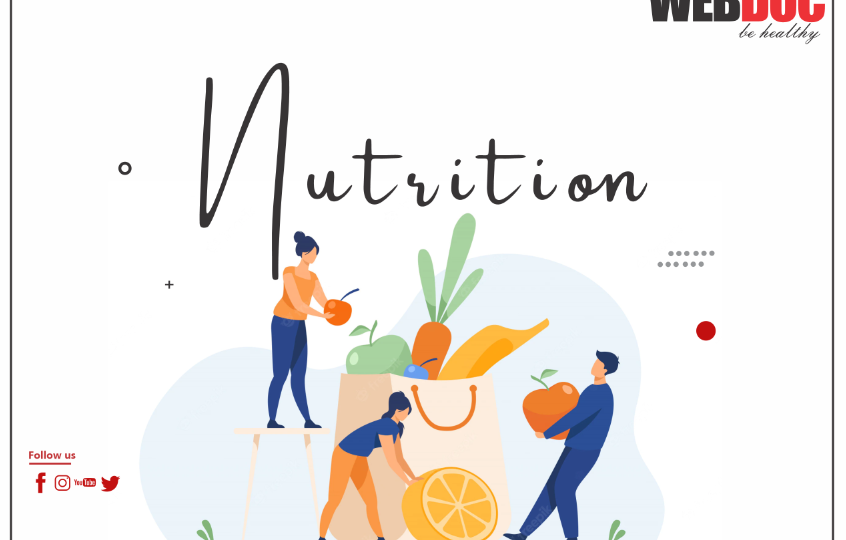GOOD NUTRITION
“Good nutrition means maintaining a nutritional status that enable us to grow well and enjoy good health”.
Balanced diet
“Diet that contains carbohydrates, proteins and fats in appropriate amount”.
Classification of food on the basis of chemical composition
- Carbohydrates
- Proteins
- Fats
- Vitamins
- Minerals
Classification of nutrients
MACRONUTRIENTS
- Proteins
- Fats
- Carbohydrates
MICRONUTRIENTS
- Vitamins
- Minerals
VITAMINS
Fats-Soluble
- Vitamin A,D,E,K
- They are fatty in nature hence insoluble in water and dissolves in fats
- Body fatty tissues are the site of storage.
Water-Soluble
Vitamin-A
Also called retinol
Sources
Plant food: Green leafy vegetables, Carrots, yellow corn, sweet potato.
Animal foods: found in liver, butter, cheese, fish, meat, eggs, milk colostrum, Halibut fish (Richest source)
Functions
- It maintains and forms healthy teeth.
- Production of retinal pigments hence helps to prevent night blindness.
- Required for normal bone development.
- Helps in normal fertility.
- Have a role in reproduction.
- Important in immune system health by helping to body to fight against foreign particles and diseases so its deficiency makes the body vulnerable to disease and antigen attacks easily.
- Helps the skin to stay hydrated, provides its moisture so its adequate amount results in the glow of the skin but if it is not efficiently utilized then results in dry, scaly, and cracking of the skin.
- Vitamin-A helps in keeping the cornea healthy so its improper working or deficiency results in corneal degeneration(tissues of the cornea i.e. part of the eye breaks down which ultimately leads to eye pain and loss of vision).
Vitamin-B1
Also called thiamine
Sources:
Plant source
- Present in cereals, wheat, pulses, legumes, flour, bread, pasta, oranges, oats, nuts, rice
Animal source
- Milk, Meat, Fish, Egg
Function
- They regulates basic cell functions
- They are involved in the breakdown of nutrients for sake of energy
- If vitamin-B2 is not present in sufficient amount then there is effect on brain and heart cells as they need a continual supply of blood for their efficient working
Vitamin-B2
Also called riboflavin
Sources
Animal source
- Liver, Milk ,Meat, Eggs
Plant source
- Green leafy vegetables
- Whole grains
Vitamin-B3
Also called niacin.
Sources
- Present in milk, meat, legumes.
Deficiency
- Severe deficiency leads to pellagra.
Symptoms of pellagra include
- Diarrhea
- Dementia (also hallucination)
- Dermatitis
Vitamin-B5
Also called pantothenic acid.
Sources
- Nuts, bean, peas.
Function
- Essential component of Co-enzyme A and fatty acid synthase.
Deficiency
- Dermatitis( It involves itchy, swollen, dry or reddened skin)
- Adrenal insufficiency
Vitamin-B6
Also called pyridoxine.
Source
Plant source
- Whole grains
- Cabbage
- Legumes
- peanuts
- oats
Animal source
- Egg yolk
- meat
- Milk
Deficiency
- Dermatitis(Skin irritation including skin rashes, lesions, swollen or reddened skin)
- Convulsions(Violent contractions of muscles)
- Hyperirritability( abnormally uninhibited response to stimuli)
- Digestive trouble


